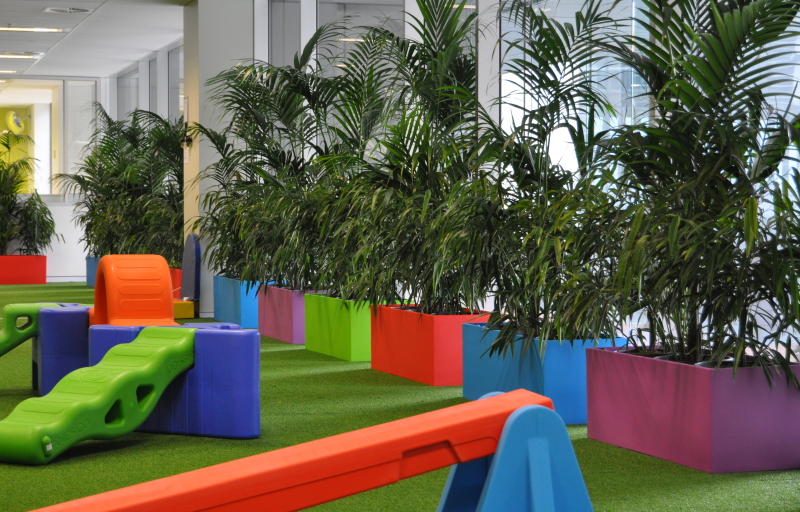
Interior Plantscape Association
Representing Australia’s interior plantscape industry
MEDIA RELEASE
25th September 2011
Live indoor plants in school classrooms may be one way of improving student performance, according to a recent scientific study conducted by the University of Technology Sydney (UTS).
UTS Professor Burchett, Dr. Fraser Torpy and John Daly, conducted trials in three Brisbane schools with more than 360 Year 6 and 7 students across 13 classes and found significant improvement in student performance in the classrooms where indoor live plants were present.
Students were tested in spelling, reading, Science and/or Mathematics before the introduction of the indoor plants and some six weeks later with indoor plants present. In two schools, significant improvements were found with plants present, as compared with classes without plants, with increases of between 10 and 14 per cent.
“Improvements of 10 percent or more in these fundamental subjects are regarded by educationists as significant in student progress,” said Professor Burchett. “One school showed no differences in performance between classes with plants and those without. It seems likely that the reason for this is that the school has an active gardening program, involving both ornamental and vegetable species. These students therefore already enjoy continuing contact with nature.”
The findings of this Queensland study are important as previously there has been almost no research conducted on the potential benefits to school student wellbeing of indoor plants in their classrooms. The results are also of interest with the recent release of the NAPLAN 2011 results which show Queensland to be still trailing other States.
Brisbane interior plantscaper and active member of the National Interior Plantscape Association, Peter Dolley said, “Providing live indoor plants for local businesses, public buildings and the private sector including schools is our main service.
Peter Dolley said the plants selected and established in local buildings and classrooms were maintained by trained indoor plant technicians.
“Certain plant species placed indoors using a specific plant to floor area ratio achieve the maximum benefit for those working and learning in those areas,” he added.
Professor Burchett confirmed that the Queensland schools study was a preliminary study, the first of its kind in aiming to compare the performance of school students in classrooms with and without plants. However, Professor Burchett and Dr. Torpy state in their findings, that if taken with the findings of other international research on the benefits of indoor plants, it seems reasonable that a recommendation could be made to education authorities for indoor plants to be a standard installation of school classrooms.
The full scientific report with graphic findings relating to this research project.